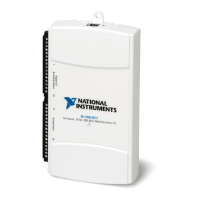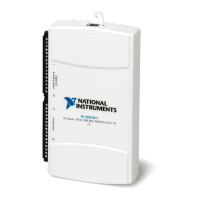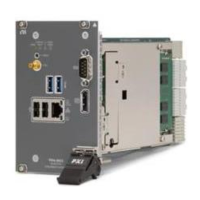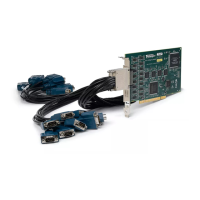Chapter 4 Analog Input
© National Instruments Corporation 4-3 NI USB-621x User Manual
calibration method improves absolute accuracy, but it increases the nominal
resolution of input ranges by about 5% over what the formula shown above
would indicate.
Choose an input range that matches the expected input range of your signal.
A large input range can accommodate a large signal variation, but reduces
the voltage resolution. Choosing a smaller input range improves the voltage
resolution, but may result in the input signal going out of range.
For more information about setting ranges, refer to the NI-DAQmx Help or
the LabVIEW 8.x Help.
Table 4-1 shows the input ranges and resolutions supported by NI 621x
devices.
Analog Input Ground-Reference Settings
NI 621x devices support the analog input ground-reference settings shown
in Table 4-2.
Table 4-1. Input Ranges for NI 621x
Input Range
Nominal Resolution Assuming
5% Over Range
–10 V to 10 V 320 μV
–5 V to 5 V 160 μV
–1 V to 1 V 32 μV
–200 mV to 200 mV 6.4 μV
Table 4-2. Analog Input Ground-Reference Settings
AI Ground-Reference
Settings
Description
DIFF In differential (DIFF) mode, NI 621x devices measure the difference in
voltage between two AI signals.
RSE In referenced single-ended (RSE) mode, NI 621x devices measure the
voltage of an AI signal relative to AI GND.
NRSE In non-referenced single-ended (NRSE) mode, NI 621x devices measure
the voltage of an AI signal relative to the AI SENSE input.

